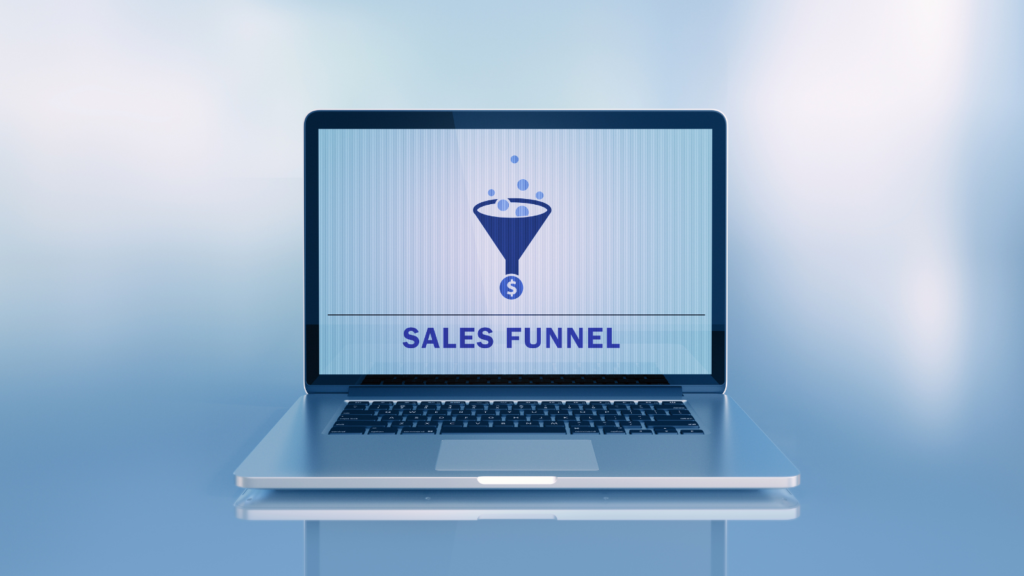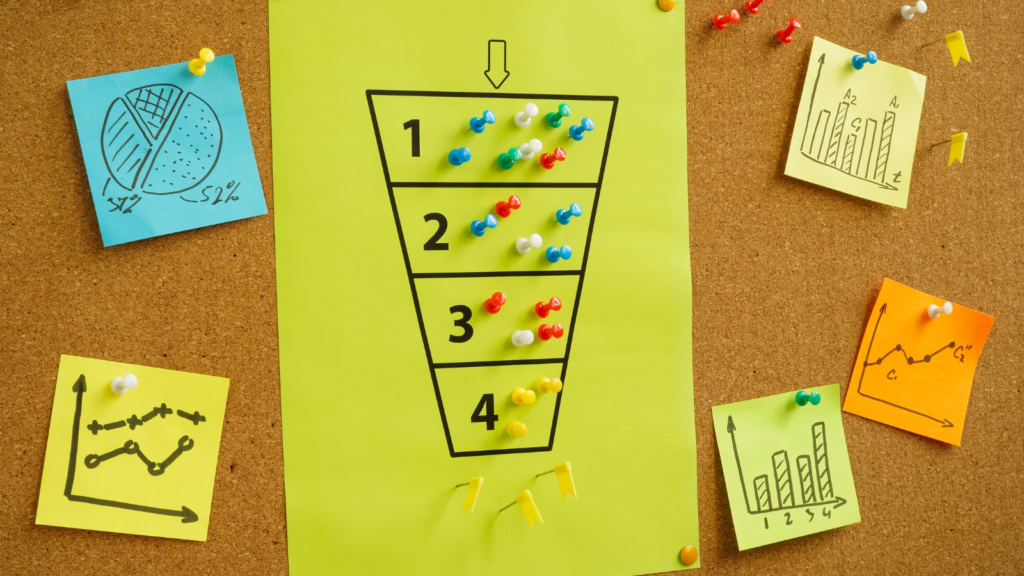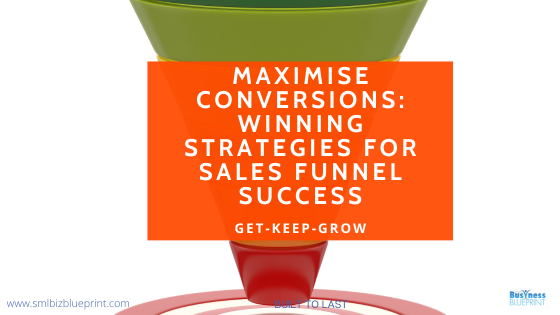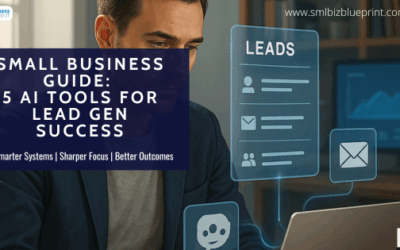As a business owner, you understand that acquiring leads is just the beginning of the journey.
The real challenge lies in converting those leads into customers returning for more.
In this comprehensive article, we will walk you through the essential steps to achieve this transformation.
Understanding the Sales Funnel
To kick things off, let’s dive into the basics of the sales funnel. Imagine it as a journey that potential customers take from the moment they become aware of your brand to the point where they become loyal patrons.
What You Should Do:
Start by visualising your own sales funnel. Identify the key stages: Awareness, Interest, Decision, and Action (AIDA).
Why You Should Do It:
Understanding these stages will help you tailor your marketing strategies to guide prospects smoothly through the funnel.
How You Should Do It:
Use tools like customer surveys and data analytics to gain insights into customer behaviour at each stage.
Actions:
Map Out Your Funnel: Create a visual representation of your sales funnel, clearly defining each stage from awareness to loyalty. This will serve as your roadmap for crafting targeted strategies.
Segment Your Audience: Divide your leads into segments based on demographics, behaviours, and preferences. This segmentation allows you to tailor your messaging and content for maximum impact.
Set Conversion Goals: Establish specific, measurable, achievable conversion goals for each funnel stage. This will help you track progress and identify areas that need improvement.
Identifying Your Target Audience
Knowing your audience inside out is pivotal for successful funnel optimisation.
What You Should Do:
Create detailed buyer personas, considering demographics, preferences, pain points, and motivations.
Why You Should Do It:
Targeted marketing is more effective and ensures you’re reaching the right people.
How You Should Do It:
Conduct market research, analyse customer data, and gather feedback.

Creating Compelling Content
Content is the heart of your funnel optimisation strategy. It must resonate with your audience at every stage.
What You Should Do:
Craft engaging, informative, and relevant content for each funnel stage.
Why You Should Do It:
Quality content builds trust and keeps leads moving through the funnel.
How You Should Do It:
Use storytelling, visuals, and expert insights to captivate your audience.
Actions:
Research Your Audience’s Pain Points: Dive deep into your audience’s pain points, challenges, and aspirations. Craft content that directly addresses these issues and provides valuable solutions.
Tell Compelling Stories: Humans are wired for storytelling. Weave narratives into your content to make it relatable and emotionally engaging, helping leads connect with your brand personally.
Use Visuals Effectively: Incorporate eye-catching visuals, such as images, infographics, and videos, to break up text and enhance the overall readability and appeal of your content.
Optimising Landing Pages
Your landing pages are the gateways to your funnel. They should be optimised to convert.
What You Should Do:
Design visually appealing and user-friendly landing pages.
Why You Should Do It:
A well-optimized landing page can significantly boost conversion rates.
How You Should Do It:
Conduct A/B tests to refine page elements like headlines, forms, and calls to action.
Actions:
Simplify Your Design: Keep your landing page design clean and clutter-free. Minimise distractions and focus on a single, clear call to action (CTA) to guide visitors.
Craft Persuasive Headlines: Your headline is the first thing visitors see. Craft attention-grabbing headlines that convey the value of your offer and encourage action.
A/B Test Elements: Continuously A/B test different elements on your landing pages, such as CTA button colours, form lengths, and imagery. Analyse the data to determine which variations lead to higher conversions.
Leveraging Email Marketing
Email marketing is a potent tool for nurturing leads and pushing them further down the funnel.
What You Should Do:
Create personalised email campaigns tailored to each stage of the funnel.
Why You Should Do It:
Email allows you to stay in touch and provide value to your leads.
How You Should Do It:
Use marketing automation to send targeted messages.
Actions
Personalise Your Emails: Tailor your email content to individual recipients whenever possible. Personalisation can significantly increase open and click-through rates.
Segment Your Email List: Divide your email list into segments based on behaviour, preferences, or demographics. Send targeted messages to each segment to increase relevance.
Automate Drip Campaigns: Create automated drip email campaigns that nurture leads over time. Provide valuable content and gradually guide them through the funnel.

Social Media Engagement
Social media is where you can build relationships with your audience.
What You Should Do:
Develop a strong social media presence and engage with your followers.
Why You Should Do It:
Social platforms are ideal for creating brand awareness and trust.
How You Should Do It:
Share relevant content, run contests, and encourage user-generated content.
Actions
Choose the Right Platforms: Focus your efforts on social media platforms that align with your target audience. Different platforms cater to different demographics and interests.
Consistent Posting Schedule: Maintain a consistent posting schedule to keep your audience engaged. Use scheduling tools to plan and automate posts for maximum efficiency.
Encourage User Interaction: Ask questions, run polls, and encourage user-generated content (UGC) to foster meaningful interactions with your followers. Engaging in discussions can lead to increased brand loyalty.
A/B Testing and Data Analysis
Continuous improvement is key in funnel optimisation.
What You Should Do:
Regularly test different strategies and analyse data.
Why You Should Do It:
A/B testing identifies what works best, leading to higher conversion rates.
How You Should Do It:
Use tools like Google Analytics to track user behaviour.
Actions
Start Small: Begin your A/B testing with small, manageable changes to avoid overwhelming your team or audience. Gradually increase complexity as you become more comfortable with the process.
Track Key Metrics: Identify and track key performance indicators (KPIs) relevant to your funnel, such as conversion rates, bounce rates, and click-through rates. This data will guide your optimisation efforts.
Regularly Review and Adjust: Make A/B testing and data analysis an ongoing practice. Regularly review the results and adjust your strategies based on what you learn to achieve continuous improvement.
Customer Retention Strategies
Don’t forget about post-conversion efforts.
What You Should Do:
Develop loyalty programs and offer exceptional post-purchase support.
Why You Should Do It:
Repeat customers are more profitable than new ones.
How You Should Do It:
Collect feedback and tailor your services to customer needs.
Actions
Offer Exclusive Benefits: Reward loyal customers with exclusive benefits, such as discounts, early access to products, or VIP customer support, to incentivise repeat business.
Collect and Act on Feedback: Actively seek customer feedback about their experiences. Use this feedback to identify areas for improvement and show that you value their opinions.
Stay in Touch: Stay connected with your existing customers through email newsletters, social media updates, or personalised messages. Keep your brand top-of-mind and nurture ongoing relationships.

Essential Steps:
Create Detailed Buyer Personas
Understanding your audience is the foundation of successful marketing. By creating detailed buyer personas, you gain invaluable insights into who your potential customers are and what drives their purchasing decisions.
A one-size-fits-all marketing approach no longer suffices. Buyer personas help you tailor your messaging, content, and strategies to resonate with specific customer segments.
When you know your audience, you can speak directly to their needs and aspirations, making your marketing efforts significantly more effective.
Craft Compelling Content
Content is the glue that holds your funnel together. It’s how you communicate with your leads, educate them, and build trust along their journey from awareness to loyalty.
High-quality, engaging content serves as the bridge between your brand and your audience. It keeps leads interested, informed, and engaged at every funnel stage.
Whether it’s informative blog posts, captivating videos, or persuasive case studies, compelling content establishes your authority, addresses customer pain points, and guides leads toward conversion.
Implement A/B Testing and Data Analysis
The digital landscape is dynamic, and what works today may not work tomorrow.
To stay ahead and continuously improve your funnel, you must embrace data-driven decision-making through A/B testing and data analysis.
A/B testing allows you to experiment with different approaches, from landing page designs to email subject lines, to determine what resonates best with your audience. Data analysis provides valuable insights into user behaviour and conversion patterns.
By staying agile and adapting based on data, you can refine your strategies, enhance user experiences, and boost conversion rates over time.
Additional Options
Leverage the Power of Gamification
Incorporating gamification elements into your funnel can be a game-changer. It involves using game-like mechanics, such as rewards, challenges, and competition, to engage and motivate your audience. Gamified experiences can captivate leads’ attention and encourage them to progress through the funnel.
Consider creating interactive quizzes, challenges, or loyalty programs that reward specific actions. For example, a points-based system that unlocks exclusive discounts or access to premium content can incentivise leads to take the desired actions.
Embrace User-Generated Content (UGC)
UGC, such as reviews, testimonials, and customer-generated content, can significantly boost trust and credibility. Potential customers often rely on the experiences of others when making purchasing decisions.
Encourage your existing customers to share their experiences with your product or service. Highlight these testimonials on your website, social media, and marketing materials. You can even create UGC campaigns, contests, or features that showcase user-generated content.
Implement a Chatbot for Real-Time Engagement
Chatbots provide instant, 24/7 support and engagement for website visitors. They can answer common questions, offer personalised recommendations, and guide leads through the funnel in real time, enhancing user experiences.
Integrate a chatbot on your website to initiate conversations with visitors and provide immediate assistance. Customise it to address frequently asked questions, gather lead information, and offer relevant content or product suggestions.
Conclusion
In conclusion, optimising your sales funnel is a continuous process that involves understanding your audience, creating compelling content, and fine-tuning your strategies based on data and insights.
By following these steps, you can transform leads into loyal customers who not only purchase from you repeatedly but also become advocates for your brand.
FAQs
Q1: What is the sales funnel?
A1: The sales funnel is a visual representation of the customer journey, from initial awareness to making a purchase.
Q2: How do I create buyer personas?
A2: Conduct research, gather demographic data, and analyse customer behaviour to create detailed buyer personas.
Q3: What is A/B testing?
A3: A/B testing involves comparing two versions of a webpage or marketing element to determine which performs better regarding conversions.
Q4: Why is email marketing important?
A4: Email marketing allows you to nurture leads, provide valuable content, and stay connected with your audience.
Q5: How can I retain customers?
A5: Implement customer loyalty programs, provide excellent post-purchase support, and actively seek feedback to tailor your offerings.
In conclusion, optimising your sales funnel is the key to turning leads into loyal customers.
By understanding your audience, creating compelling content, and continuously refining your strategies, you can achieve higher conversion rates and long-term customer loyalty.
Take action today to transform your business’s growth trajectory.




